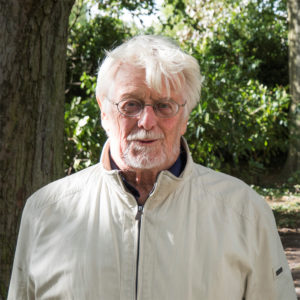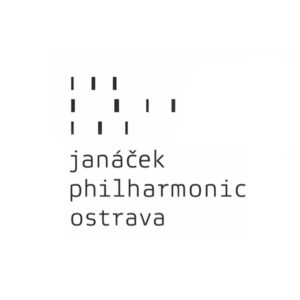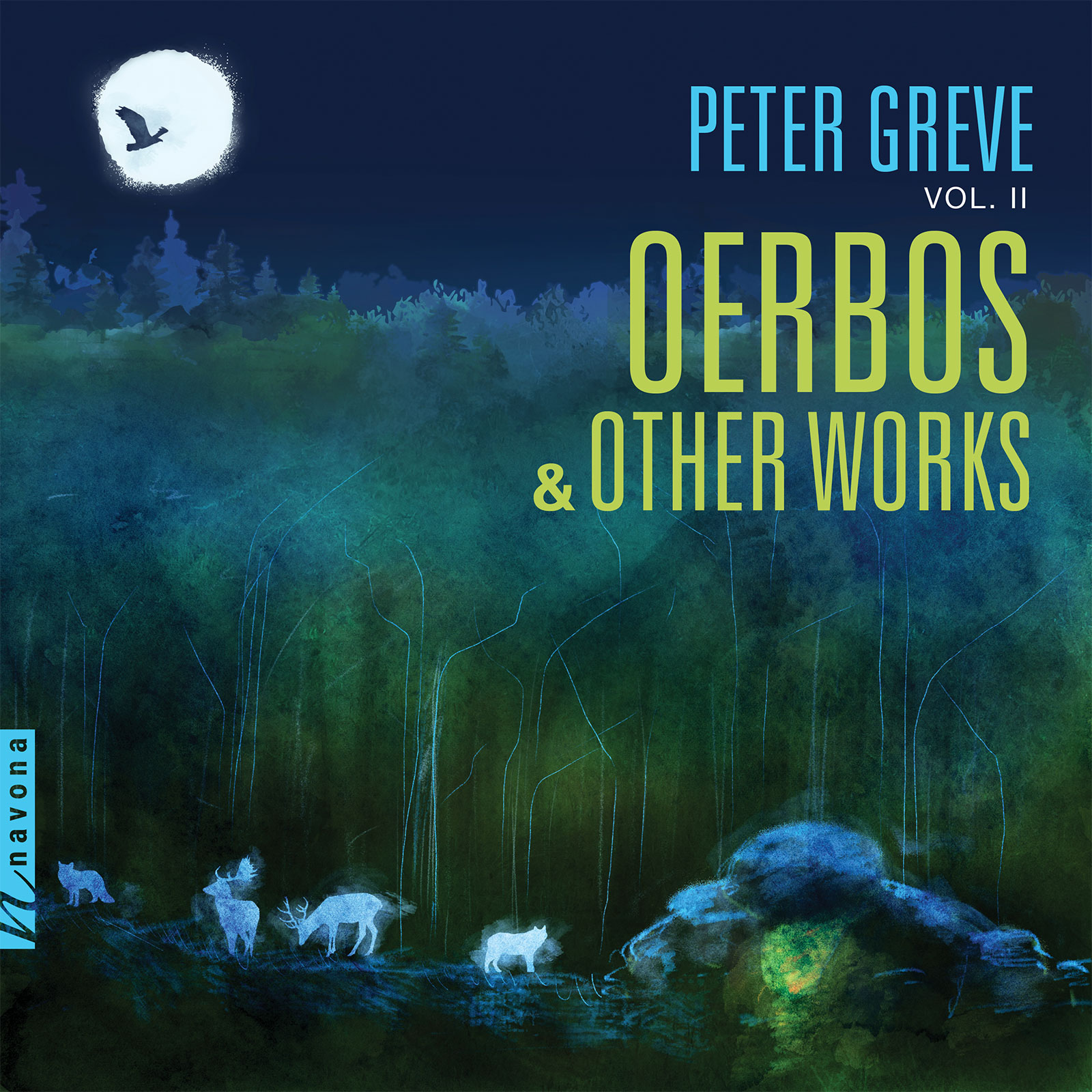Oerbos
Peter Greve composer
A primeval forest, unaltered by man and teeming with natural greens and ancient oaks, and its power struggle between chaos and order is unearthed in OERBOS from composer Peter Greve. His third volume of all original compositions, the composer offers a wide variety of works for solo, chamber, choral, and orchestral performers, along with a riveting narrative of forest life in the album’s titular symphonic poem. Join the Janáček Philharmonic Ostrava as they guide you through a turbulent passage of music, beginning with a calm sunrise and ending with an ode to the unity of mankind and nature, a celebratory movement after a ravaging storm.
Listen
Stream/Buy
Choose your platform
Track Listing & Credits
| # | Title | Composer | Performer | |
|---|---|---|---|---|
| 01 | Oerbos (Primeval Forest): I Adagio | Peter Greve | Janáček Philharmonic Ostrava | Stanislav Vavřínek, conductor | 1:53 |
| 02 | Oerbos (Primeval Forest): II Allegro vivo | Peter Greve | Janáček Philharmonic Ostrava | Stanislav Vavřínek, conductor | 2:02 |
| 03 | Oerbos (Primeval Forest): III Agitato | Peter Greve | Janáček Philharmonic Ostrava | Stanislav Vavřínek, conductor | 0:45 |
| 04 | Oerbos (Primeval Forest): IV Andante maestoso | Peter Greve | Janáček Philharmonic Ostrava | Stanislav Vavřínek, conductor | 1:50 |
| 05 | In Memoriam: Ciaconna: theme with 12 variations and Coda for clarinet, cello, and piano | Peter Greve | Harry-Imre Dijkstra, clarinet; Ephraim van IJzerlooij, cello; Antal Sporck, piano | 7:30 |
| 06 | Prelude, Chorale & Voluntary: I Prelude | Peter Greve | Wim Ruitenbeek, carillon; Fred Vogels, organ samples | 1:40 |
| 07 | Prelude, Chorale & Voluntary: II Chorale (Mantra) with Chorale Variation | Peter Greve | Wim Ruitenbeek, carillon; Fred Vogels, organ samples | 1:21 |
| 08 | Prelude, Chorale & Voluntary: III Voluntary | Peter Greve | Wim Ruitenbeek, carillon; Fred Vogels, organ samples | 2:10 |
| 09 | Dialogues: I Discussion: Moderato | Peter Greve | Markéta Soldánová, flute; Petr Nouzovský cello; Lucie Kaucká, piano; David Chevalier, narrator | 2:35 |
| 10 | Dialogues: II Dispute: Vehemente | Peter Greve | Markéta Soldánová, flute; Petr Nouzovský cello; Lucie Kaucká, piano; David Chevalier, narrator | 2:41 |
| 11 | Dialogues: III Reflection: Adagio tranquillo | Peter Greve | Markéta Soldánová, flute; Petr Nouzovský cello; Lucie Kaucká, piano; David Chevalier, narrator | 4:01 |
| 12 | Dialogues: IV Celebration: Allegro energico – Moderato | Peter Greve | Markéta Soldánová, flute; Petr Nouzovský cello; Lucie Kaucká, piano; David Chevalier, narrator | 3:14 |
| 13 | Sonatina: Allegro energico - Poco meno - Adagio - Tempo I, ma poco più mosso | Peter Greve | Peter Greve, piano | 2:54 |
| 14 | Symfonietta: I Adagio – Allegro vivace – Tempo I | Peter Greve | Filharmonie Brno | Mikel Toms, conductor; Stewart Clapp, narrator | 4:55 |
| 15 | Symfonietta: II Adagio – Andante espressivo – Tempo I | Peter Greve | Filharmonie Brno | Mikel Toms, conductor; Stewart Clapp, narrator | 6:54 |
| 16 | Symfonietta: III Allegro moderato | Peter Greve | Filharmonie Brno | Mikel Toms, conductor; Stewart Clapp, narrator | 6:13 |
Oerbos
Recorded May 25, 2021 at Dům Kultury města Ostravy (The Ostrava House of Culture) in Ostrava, Czech Republic
Recording Session Producer Jan Košulič
Recording Session Engineer Pavel Kunčar
Editing & Mixing Lucas Paquette
In Memoriam, Ciaconna
Recorded October 26, 2021 at Het Witte Kerkje in Baarn, Netherlands
Recording Producer Martin Claassens
Prelude, Chorale & Voluntary
Recorded November 11, 2020 at the studio of Fred Vogels in Zwolle, Netherlands; Carillon recorded November 18, 2020 in the open air next to the Town Hall of Hilversum, Netherlands; Mixing at Sweet Studio in Baarn, Netherlands; Wim Ruitenbeek – carilloneur of the Town Hall of Hilversum; Organ Samples from the organ of the Union Chapel, London UK
Recording Producer and Mixing Martin Claassens
Dialogues
Recorded June 24, 2016 at Reduta Hall in Olomouc, Czech Republic
Recording Producer Vit Mužík
Editing & Mixing Shaun Michaud
Sonatina
Recorded October 9, 2020 at Sweet Studio in Baarn, Netherlands
Recording Producer Martin Claassens
Symfonietta
Recorded December 6, 2014 at Besední Dům in Brno, Czech Republic
Recording Producer Jaroslav Zouhar
Executive Producer Bob Lord
Executive A&R Sam Renshaw
A&R Director Brandon MacNeil
General Manager of Audio & Sessions Jan Košulič
Audio Director Lucas Paquette
Production Director Levi Brown
Production Assistant Martina Watzkova
Mastering Melanie Montgomery
VP, Design & Marketing Brett Picknell
Art Director Ryan Harrison
Design Edward A. Fleming
Publicity Patrick Niland, Sara Warner
Artist Information

Peter Greve
Peter Greve (1931-2021) was born in The Hague (Netherlands). He received musical training in The Hague from Jean Antonietti and Léon Orthel (piano), Theo Laanen (trumpet), Dr. Marcus van Crevel (music theory), and later from Willem Frederik Bon (Amsterdam), Myers Foggin (United Kingdom) and Terence Lovett (United Kingdom), in orchestral conducting. During this time, he also studied at the State University of Leiden (Netherlands), where he obtained M.Sc. (1957) and Ph.D. (1959) degrees in chemistry.

Janáček Philharmonic Ostrava
The Janáček Philharmonic is a world-class symphony orchestra based in Ostrava, Czech Republic and an emerging figure on the international performance scene. With over 100 top-level musicians, the orchestra aims to introduce unique, quality repertoire while showcasing their own recognizable sound.

